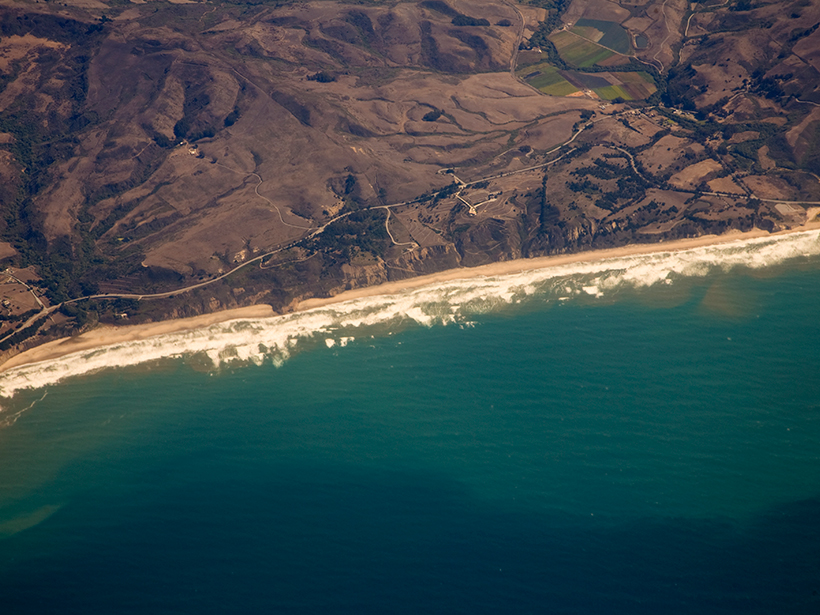Source: Journal of Geophysical Research: Oceans
Waves on the surface of the ocean with long periods (1–5 minutes) and low frequencies (0.005–0.05 hertz) are called infragravity waves. These features, which appear to originate from physical interactions between wind-driven waves near coastlines, play an important role in sediment transport, coastal erosion, and other nearshore processes. In addition, infragravity waves have significantly longer wavelengths compared with swell, which means they can more easily penetrate beneath sea ice and are believed therefore to catalyze the breakup of ice shelves.
Although previous studies have suggested that some infragravity wave energy can cross continental shelves and radiate into the ocean basins, this process is still poorly understood. To further investigate this phenomenon, Smit et al. analyzed records collected in March 2012 by the Cascadia Amphibious Array, a group of pressure sensors deployed along a seafloor transect west of the Oregon coast at depths ranging from 54 meters on the continental shelf to 1909 meters west of the shelf break.
The observations confirm that infragravity waves originate near the coast and demonstrate that the waves experience a 2-order-of-magnitude reduction in energy when they cross the shelf break. The authors explain this sharp attenuation using a simple model of geometrical optics, which assumes that the shelf and the shelf break effectively trap most of the infragravity energy and allow only a small fraction to escape into the basin. Because this propagation was not strongly affected by the geometry of the Oregon continental shelf, the team concluded that the infragravity waves’ energy levels can be directly estimated from coastal observations. This finding should simplify future efforts to predict the impacts of infragravity waves on ice shelves and other remote sites. (Journal of Geophysical Research: Oceans, https://doi.org/10.1029/2018JC013986, 2018)
—Terri Cook, Freelance Writer
Citation:
Cook, T. (2018), On the origin of infragravity waves, Eos, 99, https://doi.org/10.1029/2018EO101911. Published on 23 July 2018.
Text © 2018. The authors. CC BY-NC-ND 3.0
Except where otherwise noted, images are subject to copyright. Any reuse without express permission from the copyright owner is prohibited.

